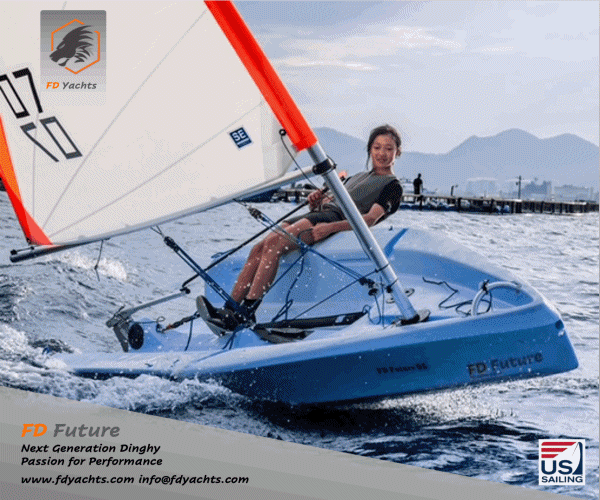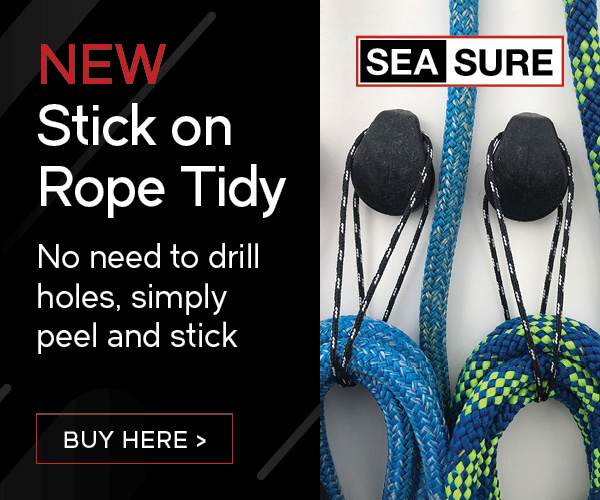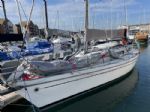









-(1)-202408140552.gif)


| Rossiter Pintail Mortagne sur Gironde, near Bordeaux |
 |
| Laser 28 - Excellent example of this great design Hamble le rice |
 |
| Laser 140101 Tynemouth |
 |
List classes of boat for sale |
Dinghy hull weights |
Post Reply 
|
Page <1 7891011 13> |
| Author | ||
Cirrus 
Really should get out more 
Joined: 29 Oct 15 Location: UK Online Status: Offline Posts: 590 |
 Post Options Post Options
 Quote Quote  Reply Reply
 Topic: Dinghy hull weights Topic: Dinghy hull weightsPosted: 30 Aug 16 at 12:35pm |
|
|
Still leaves a couple of questions though.
I know the minimum weight is 72kgs but what is standard weight? and are the
modern ones made to the same weight tolerance as thew 10yr old ones or are the
built closer to 72kgs now? Could we have reduced the class minimum weight ? - Very probably but this would have made the early polyester boats at a disadvantage and produced in effect a ‘two-class’ boat. Usefully at this weight the Blazes is not particularly fragile (though some owners do try to prove otherwise and drive them extremely hard in just about any conditions – the boats are simply superb fun in F4+) …. but if owners do have a problem the hull can still be easily enough sorted. Edited by Cirrus - 30 Aug 16 at 12:37pm |
||
 |
||
RS400atC 
Really should get out more 
Joined: 04 Dec 08 Online Status: Offline Posts: 3011 |
 Post Options Post Options
 Quote Quote  Reply Reply
 Posted: 26 Aug 16 at 3:55pm Posted: 26 Aug 16 at 3:55pm |
|
I have seen worse than 20 kg on a dory hull not much bigger than a 505. Lots of foam, lots of plywood. |
||
 |
||
JimC 
Really should get out more 

Joined: 17 May 04 Location: United Kingdom Online Status: Offline Posts: 6662 |
 Post Options Post Options
 Quote Quote  Reply Reply
 Posted: 26 Aug 16 at 2:28pm Posted: 26 Aug 16 at 2:28pm |
|
|
Possible perhaps given a large quantity of not-very-closed-cell-foam reserve buoyancy.
|
||
 |
||
Sam.Spoons 
Really should get out more 
Joined: 07 Mar 12 Location: Manchester UK Online Status: Offline Posts: 3401 |
 Post Options Post Options
 Quote Quote  Reply Reply
 Posted: 26 Aug 16 at 12:51pm Posted: 26 Aug 16 at 12:51pm |
|
My thoughts exactly, a couple of litres maybe but not 20......
|
||
 |
||
Roger 
Really should get out more 

Joined: 23 Mar 04 Location: Somerset Online Status: Offline Posts: 524 |
 Post Options Post Options
 Quote Quote  Reply Reply
 Posted: 26 Aug 16 at 10:47am Posted: 26 Aug 16 at 10:47am |
|
I can assure you there is no carbon in this particular 505 hull, built by Kyrewood, they did build some hulls around that time in carbon, but they continued to offer both options so there was a lower priced hull and the carbon one. However even without carbon it is still very stiff, certainly in comparison to similar age boats from other builders. Some of the build is is purely glass, and in the high stress areas end grain balsa sandwich. I guess during the 80's 90's as you say there were several 505 builders, all trying to get an edge on their rivals, but I guess my point, given what this thread is about, is that not all boats, even those of more "basic" construction will take up water. Perhaps the secret lies in the build process as well as the care taken with the boat over the years? Somebody suggested earlier in the thread that a boat may have taken up 20kg of water, really?, that would be aprox 20 litres, is that realistic in a 4-5m long dinghy, it may be of course if there is a lot of timber under the fibreglass as that would hold water very easily if it got in and have difficulty getting rid of it, I have certainly heard horror stories in some classes. Certainly weighing boats should not be a major problem and could save a lot of trouble. At Phantom nationals in the past we used to simply place the boat on a bench scale similar to these https://www.ourweigh.co.uk/bench-scales/WS12000AAZAAAA.html?gclid=Cj0KEQjw0f-9BRCF9-D60_n4rKcBEiQAnXW4-5yvE2Bo0GpirmGIdU0qeeUtDeBiIisSLrWWVYJFYzUaAp7m8P8HAQ once you knew where the balance point was it was simple and took very little time, I have also seen the same used with a custom made V or U shaped pad on top which you can rest any hull on. For the sake of £80 a set of scales would be a good investment. Edited by Roger - 26 Aug 16 at 10:49am |
||
 |
||
jeffers 
Really should get out more 

Joined: 29 Mar 04 Location: United Kingdom Online Status: Offline Posts: 3048 |
 Post Options Post Options
 Quote Quote  Reply Reply
 Posted: 26 Aug 16 at 9:22am Posted: 26 Aug 16 at 9:22am |
|
I know that boat I think..... Jack in the Green I think it was called.....
|
||
|
Paul
---------------------- D-Zero GBR 74 |
||
 |
||
maxibuddah 
Really should get out more 

Joined: 06 Mar 09 Location: United Kingdom Online Status: Offline Posts: 1760 |
 Post Options Post Options
 Quote Quote  Reply Reply
 Posted: 26 Aug 16 at 8:12am Posted: 26 Aug 16 at 8:12am |
|
|
Tha heaviest phantom, polyester rather than a wooden one, weighed in the last 15 years at the nationals I think was approx 14kgs overweight,making it 75kgs without rig.
Edited by maxibuddah - 26 Aug 16 at 8:13am |
||
|
Everything I say is my opinion, honest
|
||
 |
||
RS400atC 
Really should get out more 
Joined: 04 Dec 08 Online Status: Offline Posts: 3011 |
 Post Options Post Options
 Quote Quote  Reply Reply
 Posted: 26 Aug 16 at 6:58am Posted: 26 Aug 16 at 6:58am |
|
I am surprised there's no carbon at all in a mid 90s 505, not even around the mast/bulkhead/chainplate area? The 400 does have a little kevlar in this area allegedly. What the 90s 505 does have is 30 odd years of refinement and competition between builders, compared to 400s being knocked out by subcontract moulders. What your boat may lack in materials is compensated by a great deal of (iterative) design effort and build cost. The 400 does not even have a proper bulkhead for the rig. My 400 is similar age, when new it was a much cheaper option than a 505. Even allowing for the 505 being a bit bigger. The 400 is a good design, but is a compromise for cheapness in the factory. The design work was good enough for RS to get 800-odd boats sold before the facelift of a few years ago. I wonder where the break even point was? Was it around the end of the 80s Parker had their 'type 25' 5-oh? and that development was going on in all the rival builders too. Don't know what my 400 weighs. I know the mast is very much heavier than a Merlin's carbon one, and weight aloft slows a boat much more than weight in the hull.... And the trolley could be lighter for sure! |
||
 |
||
Roger 
Really should get out more 

Joined: 23 Mar 04 Location: Somerset Online Status: Offline Posts: 524 |
 Post Options Post Options
 Quote Quote  Reply Reply
 Posted: 25 Aug 16 at 10:26pm Posted: 25 Aug 16 at 10:26pm |
|
This year my 21 year old 505 was weighed at 1kg overweight, and it still carries 2kg of lead, so a full reweigh would put it minimum weight. It is built from polyester resin with end grain balsa sandwich in high stress areas, it also has an alloy boom, the only carbon is the twin poles and tiller, there isn't anything exotic in the hull. |
||
 |
||
Sam.Spoons 
Really should get out more 
Joined: 07 Mar 12 Location: Manchester UK Online Status: Offline Posts: 3401 |
 Post Options Post Options
 Quote Quote  Reply Reply
 Posted: 25 Aug 16 at 10:12pm Posted: 25 Aug 16 at 10:12pm |
|
|
The RS400 has a quoted all up weight of 129kg (with a hull weight of 85kg, the same as the Spice) and I was hoping my Spice would be close to that weight with sails, foils and rigging.
The 505's 127.4 'sailing weight (hull, fittings, foils and rig but no sails) is pretty impressive for a 50 year old design but exotic materials (CF, kevlar, epoxy etc) are commonly used in their construction. Given all of that the RS400 at 129 kg is not so heavy, it's a bit shorter than a 505 but is built in relatively conventional materials (vinylester resin, not epoxy and not much, if any CF). Sails will account for around 10 kg so if the 400's 'sailing weight' is without sails I feel a little better with a wet kite and jib hung on mine when I weighed it at 134kg (plus mainsail, boom and foils).
Edited by Sam.Spoons - 25 Aug 16 at 10:14pm |
||
 |
||
Post Reply 
|
Page <1 7891011 13> |
| Forum Jump | Forum Permissions  You cannot post new topics in this forum You cannot reply to topics in this forum You cannot delete your posts in this forum You cannot edit your posts in this forum You cannot create polls in this forum You cannot vote in polls in this forum |
Copyright ©2001-2010 Web Wiz
Change your personal settings, or read our privacy policy












 Printable Version
Printable Version Delicious
Delicious Digg
Digg Facebook
Facebook Furl
Furl Google
Google MySpace
MySpace Newsvine
Newsvine reddit
reddit StumbleUpon
StumbleUpon Twitter
Twitter Windows Live
Windows Live Yahoo Bookmarks
Yahoo Bookmarks Topic Options
Topic Options ).
).